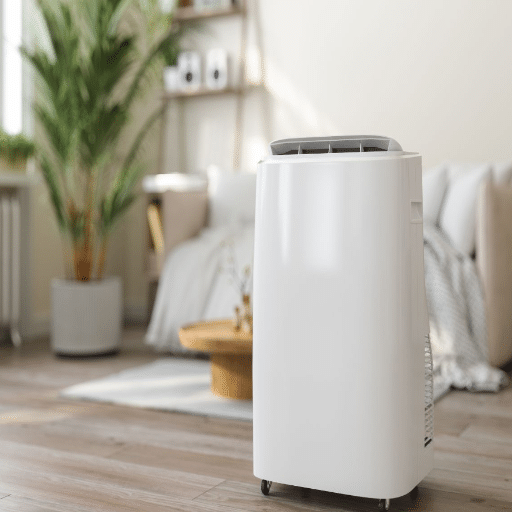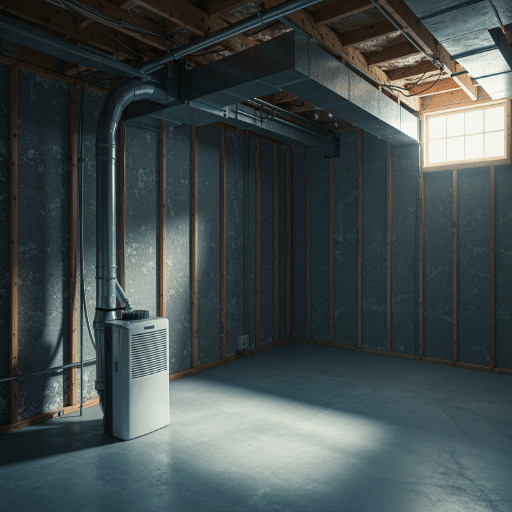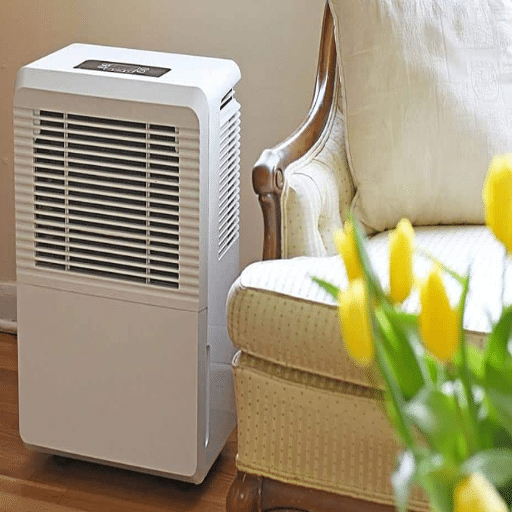Finding the right dehumidifier can be a game-changer when it comes to improving your indoor air quality and creating a more comfortable environment. Whether you’re battling excessive humidity, preventing mold growth, or simply looking to enhance your home’s overall ambiance, a dehumidifier is an essential solution. But with so many options available, how do you determine which one is best for your specific needs? This guide dives into the various types of dehumidifiers, breaking down their unique features, benefits, and ideal use cases. From compact units for small rooms to heavy-duty options for large spaces, we’ll arm you with the insights you need to make an informed choice. Get ready to discover how the right dehumidifier can transform your space for the better!
What Are the Main Types of Dehumidifiers?
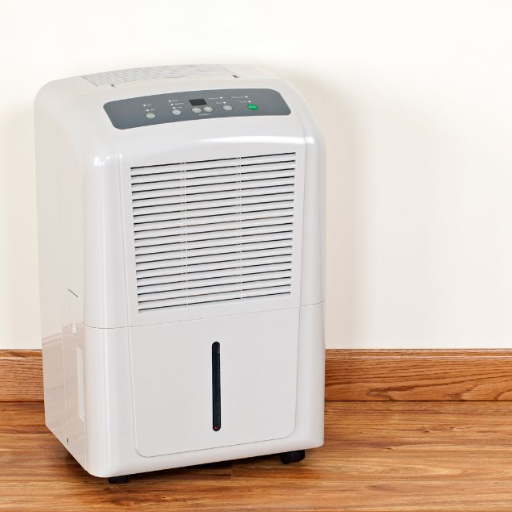
Dehumidifiers can be broadly categorized into three main types:
- Refrigerant Dehumidifiers
These are the most common type, using cooling coils to condense moisture from the air. They are ideal for warm, humid climates and work effectively in spaces such as basements or living areas.
- Desiccant Dehumidifiers
This type uses a moisture-absorbing material to extract water from the air. They perform well in lower temperatures and are suitable for colder climates or spaces like garages.
- Whole-House Dehumidifiers
Designed to integrate with a home’s HVAC system, these units offer comprehensive moisture control throughout the entire house, making them a great choice for larger homes or spaces with consistent humidity issues.
Understanding Desiccant Dehumidifiers
Desiccant dehumidifiers work by using a certain absorbent material, usually silica gel, to capture and separate moisture from the air. These units are more efficient in colder conditions because, unlike refrigerant-based models, they do not depend on condensation or refrigeration coils.
The greatest advantage of these models is their ability to perform optimally at any temperature of the space. This flexibility makes them useful in garages, damp basements, and colder regions prone to excess moisture. In addition, they do not use compressors, which leads to noticeably quieter operation compared to refrigerant models.
Modern units come with energy-efficient designs, adjustable-speed fans, smart humidity sensing, and lightweight, compact designs for easy transport. Some models are capable of removing 10 to 20 liters of moisture daily, depending on their surroundings and size. Moreover, having no frost buildup means the unit can run continuously without needing a defrost cycle.
These dehumidifiers are an excellent option for reliable moisture regulation for demanding or varying environments, providing a blend of robust durability, flexibility, and advanced performance.
How Refrigerant Dehumidifiers Work
Refrigerant dehumidifiers, also known as compressor dehumidifiers, operate by drawing in moist air and passing it over cold coils. The temperature of these coils is lower than the dew point of the air, causing the moisture to condense into water droplets. These droplets are then collected in a tank or directed to a drainage system, while the drier air is reheated and released back into the environment. This process is particularly effective in warm and humid climates, as refrigerant dehumidifiers perform best in temperatures above 41°F (5°C).
Modern refrigerant dehumidifiers are equipped with advanced features to enhance efficiency and user convenience. For instance, many models now include digital humidity sensors that allow precise control over indoor moisture levels, maintaining an optimal relative humidity between 30% and 50%, as recommended by the Environmental Protection Agency (EPA). Some high-capacity units can remove up to 70 pints of water per day, making them ideal for larger spaces such as basements or open-plan living areas. Additionally, energy-efficient models bearing ENERGY STAR® certification can reduce electricity consumption by up to 30% compared to non-certified alternatives.
Beyond their standard applications, refrigerant dehumidifiers are crucial in preventing mold growth, corrosion, and structural damage caused by excess humidity, safeguarding both personal health and property. By investing in a refrigerant dehumidifier that balances capacity, energy efficiency, and cutting-edge features, users can significantly improve indoor air quality and comfort.
The Role of Industrial Dehumidifiers in Large Spaces
Industrial dehumidifiers play a vital role in maintaining environmental conditions across expansive facilities such as warehouses, manufacturing plants, and commercial storage spaces. High humidity levels in large spaces can lead to material degradation, equipment failure, and microbial growth, significantly impacting operational efficiency and product quality. According to recent insights, properly maintained humidity levels—typically between 30% and 50%—are essential for safeguarding sensitive materials and machinery from damage.
Modern industrial dehumidifiers are designed to handle large volumes of air efficiently, with some models offering capacities exceeding 500 pints per day, making them ideal for high-demand environments. Additionally, advancements in energy-efficient technology now allow these units to achieve optimal performance while reducing operational costs. For instance, energy recovery systems and programmable controls enable precise regulation of moisture levels, cutting energy consumption by as much as 20%.
Applications of industrial dehumidifiers extend beyond moisture control. They are increasingly utilized in industries like pharmaceuticals, where precise humidity levels are critical to product stability, and in food processing facilities, where improper moisture can lead to spoilage. By strategically integrating these systems into operations, businesses can not only preserve the integrity of their assets but also ensure compliance with strict industry standards.
How Does a Dehumidifier Work?
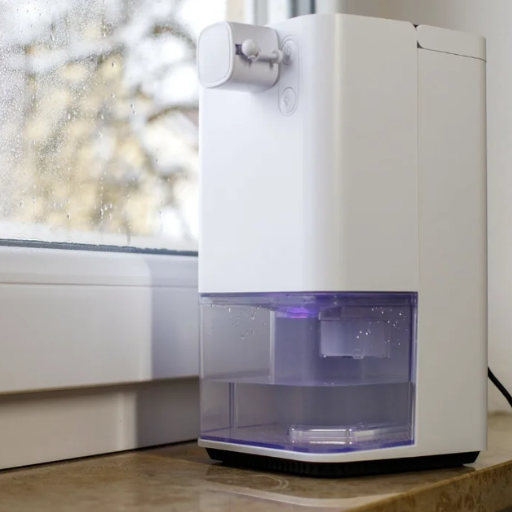
Dehumidifiers operate by extracting excess moisture from the air to maintain ideal humidity levels. A dehumidifier draws in humid air with a fan, passes it over cold coils, which condense the moisture into water, collects the water in a tank, or drains it directly. The dry air is slightly reheated and released back into the room. This cycle helps slow mold growth, condensation, musty odors, and other similar issues while creating a more pleasant surrounding atmosphere.
The Condensation Process Explained
Condensation also follows the laws of thermodynamics and moisture dynamics to help in lowering humidity levels. Warm humid air is then pulled into a dehumidifier where it is passed over cooling coils that are set below the air’s dew point. In this stage, the moisture content is steam which need to be converted to liquid water. Colder air than liquids can retain far less water vapor, cooler air is needed. The liquid water is collected suspended in a reservoir or drained by a hose system.
Most modern dehumidifiers come with efficiency features to estimate operational performance. For example, many devices are designed to take out 20 to 70 pints of water in a day simultaneously with the device’s size, capacity, and energy rating. Studies suggest best indoor humidity levels are 30% – 50% because of comfort, mold, and dust mite infestation prevention. High-end models take more energy, some use 3-4 kWh per gallon of water extracted but accomplish effective functionality along with energy saving.
In addition, the innovations of auto humidity sensors and eco-friendly refrigerants have improved the process of dehumidification due to being more accurate and less damaging to the environment. Collectively, these innovations make certain that the process of condensation enhances the quality of air while ensuring that the people living indoors sustain a healthier low carbon footprint life.
Components: Compressor, Evaporator, and Condenser
Compressor
The compressor is a critical component in the dehumidification process, acting as the heart of the system. Its primary role is to compress the refrigerant, raising its temperature and pressure to facilitate heat exchange. Modern compressors are designed for energy efficiency, with variable-speed technology allowing precise control of the cooling cycle. By adjusting output based on humidity levels, these advanced systems reduce energy consumption and extend the lifespan of the unit. For instance, high-efficiency rotary compressors often feature reduced noise levels, operating at 40-50 decibels, ensuring a quieter indoor environment.
Evaporator
The evaporator plays an essential role by cooling air and condensing moisture. When warm, humid air passes over the evaporator coils, the temperature drop causes water vapor to condense into liquid, which is then collected and removed. Recent developments in evaporator design, such as microchannel technology, have significantly increased heat transfer efficiency. These innovations result in faster moisture removal and smaller system footprints, making them ideal for compact dehumidifiers. Additionally, coatings like hydrophilic and anti-corrosive layers on evaporator fins ensure durability and more effective water drainage.
Condenser
The condenser is responsible for releasing the heat absorbed during the dehumidification cycle. After the refrigerant picks up heat from the air, the condenser cools and converts it back into a liquid form, allowing the cycle to repeat. Advanced condensers are now designed with enhanced heat dissipation capabilities, using materials like aluminum and high-performance alloys to improve thermal conductivity. Some models also incorporate fin-and-tube or parallel flow designs, which optimize airflow and reduce operational temperatures. These advancements contribute to overall system efficiency, bolstering performance while maintaining low energy usage.
By combining these three core components—compressor, evaporator, and condenser—modern dehumidifiers exhibit superior functionality, offering unmatched reliability and optimal indoor climate control.
Impact on Humidity Levels and Air Quality
Modern dehumidifiers play a pivotal role in maintaining balanced humidity levels, which are essential for both comfort and health. The ideal indoor humidity level typically ranges between 30-50%, as recommended by leading health organizations. By effectively removing excess moisture from the air, dehumidifiers create an environment less conducive to the growth of mold, mildew, and dust mites—common triggers for allergies and respiratory issues.
Additionally, maintaining proper humidity has a positive impact on air quality. Excess moisture can lead to stale or damp odors and increase the presence of airborne pollutants, such as mold spores. Dehumidifiers equipped with advanced filters further contribute to cleaner air by capturing particulates, ensuring a healthier breathing environment. Data suggests that households utilizing dehumidifiers report up to a 50% reduction in allergen presence seasonally, significantly improving overall well-being.
Furthermore, the use of energy-efficient dehumidifiers has grown increasingly popular, contributing to both environmental sustainability and cost savings. Features such as smart humidity controls, energy-saving modes, and auto-adjustments ensure optimal performance without unnecessary energy expenditure. This technological integration offers a dual benefit of reducing excess humidity while improving indoor air quality consistently throughout the year.
Choosing the Right Dehumidifier for Your Needs
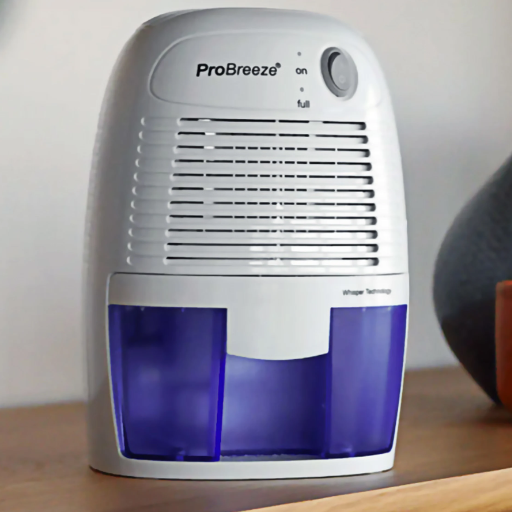
When choosing a dehumidifier, start by assessing the size of the space and the moisture levels in the area. Small-capacity models are ideal for bathrooms or closets, while larger-capacity units are better suited for basements or living rooms with high humidity. Look for features like adjustable humidity settings, a built-in hygrometer, and energy efficiency certifications to ensure the unit meets your needs. Quiet operation and easy-to-maintain designs, such as removable filters and accessible water tanks, can further improve usability. Ensure the dehumidifier is rated for your room size and prioritizes consistent performance to maintain a comfortable indoor environment.
Factors to Consider: Humidity and Space Size
When selecting a dehumidifier, the interplay between humidity levels and the size of the space is a critical factor. Rooms with high humidity levels, such as basements or bathrooms, may require a unit with a higher moisture removal capacity. For instance, a dehumidifier rated to remove 50 pints of water per day is ideal for spaces with excessive dampness or areas measuring around 1000 square feet.
On the other hand, smaller rooms with moderate humidity levels may benefit from a 20-30 pint unit, which can maintain comfort without excessive power usage. For spaces exceeding 1,500 square feet, look for heavy-duty models capable of removing at least 70 pints daily to ensure optimal performance. Many modern units come equipped with auto-humidity sensors, which allow the device to adjust operations based on real-time humidity detection, enhancing energy efficiency. Considering these parameters ensures that your dehumidifier can effectively handle the unique demands of your environment while promoting improved air quality and reducing the risk of mold and mildew growth.
Comparing Portable Dehumidifiers and Commercial Dehumidifiers
When deciding between portable and commercial dehumidifiers, it’s essential to match your choice to the specific needs of the space and the scope of moisture control required. Portable dehumidifiers are compact, lightweight, and ideal for residential spaces such as bedrooms, basements, or small offices. They typically have a moisture removal capacity ranging from 20 to 50 pints per day, making them sufficient for personal or small-scale use. These units are user-friendly, often featuring adjustable humidity controls, built-in wheels for mobility, and quieter operations that suit indoor environments.
On the other hand, commercial dehumidifiers are designed for industrial or larger-scale environments such as warehouses, construction sites, or flood-affected areas. With a capacity to extract 70 to 150+ pints per day, they are significantly more powerful than portable models. Some high-capacity units can handle up to 400 pints per day, catering to extreme conditions with high humidity levels. Commercial units are also built for durability, featuring heavy-duty components capable of withstanding rigorous use. Additionally, many models come with advanced features like continuous drain options, washable filters, and automated defrost systems for use in lower temperatures.
While portable dehumidifiers are generally cost-effective, with prices ranging between $150 and $300, commercial models can range from $800 to over $3,000, depending on capacity and features. Commercial units also tend to consume more energy, although advancements in energy-efficient technology are gradually narrowing the gap.
Ultimately, portable dehumidifiers are a practical choice for regular household dehumidification, while commercial models are indispensable for large spaces, areas prone to severe humidity, or professional applications. Selecting the right option depends on evaluating your space, moisture challenges, and budget to ensure optimal air quality and performance.
How to Dehumidify Basements and Crawl Spaces
Dehumidifying basements and crawl spaces is crucial for preventing mold growth, improving air quality, and protecting your home’s structural integrity. Below are detailed steps and strategies to address humidity in these areas effectively:
- Identify and Address Moisture Sources
Begin by locating the root cause of the moisture. Leaky pipes, poor drainage, or cracks in the foundation can all allow water to seep in, increasing humidity levels. Ensure exterior drainage systems are directing water away from the foundation, and seal any visible cracks or leaks with waterproofing materials for long-lasting protection.
- Install a High-Capacity Dehumidifier
Basements and crawl spaces require dehumidifiers equipped to handle high humidity levels in large or enclosed areas. Look for models with a recommended daily moisture removal rate of at least 50-70 pints for medium spaces or consider commercial-grade units for spaces exceeding 2,000 square feet. Maintaining a relative humidity level below 50% is ideal to discourage mold formation.
- Improve Ventilation Systems
Poor airflow allows moisture to accumulate. Adding ventilation fans in crawl spaces or employing HVAC systems with dehumidification features can significantly enhance air circulation. Consider exhaust fans, particularly if the area experiences minimal natural ventilation.
- Use Vapor Barriers in Crawl Spaces
Install polyethylene vapor barriers to cover the exposed ground in crawl spaces. This method prevents moisture from the soil from evaporating into the air, lowering overall humidity levels. For best results, tape the seams of the barrier and extend it up the walls.
- Insulate Properly to Prevent Condensation
Poor insulation can lead to condensation on walls or pipes, exacerbating moisture issues. Use rigid foam insulation on basement walls and insulate exposed pipes to minimize temperature differences that cause water to condense.
- Monitor and Maintain Regularly
Invest in a hygrometer to monitor humidity levels regularly and ensure they remain in the optimal range. Check dehumidifiers, drainage systems, and vapor barriers periodically for signs of wear or blockages to maintain efficiency over time.
Exploring Industrial Applications of Dehumidifiers
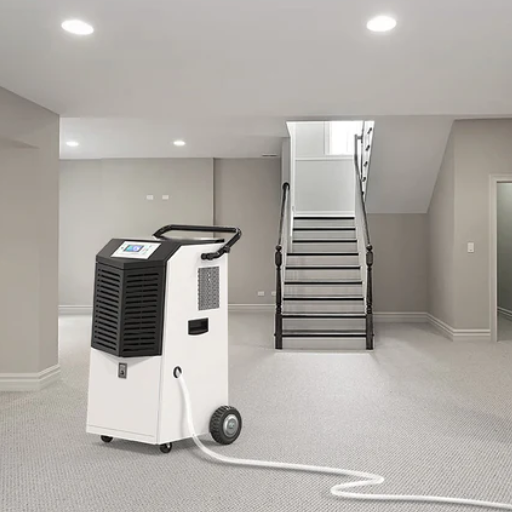
Dehumidifiers play a crucial role in various industrial applications by maintaining optimal humidity levels to protect products, equipment, and processes. In manufacturing, they prevent moisture-related damage to materials like wood, paper, or textiles, ensuring consistent product quality. Food production facilities use dehumidifiers to inhibit mold and bacteria growth, extending shelf life and meeting hygiene standards. Additionally, industries such as pharmaceuticals and electronics rely on controlled humidity to prevent corrosion, condensation, and degradation of sensitive components. By optimizing environmental conditions, dehumidifiers ensure efficiency, safety, and compliance across a wide range of industrial operations.
Why Dehumidifiers Are Essential in Industrial Settings
From my perspective, dehumidifiers are indispensable in industrial settings because they create a stable and controlled environment that prevents moisture-related issues. Excess humidity can cause equipment damage, product spoilage, and safety hazards, but dehumidifiers effectively mitigate these risks by regulating moisture levels. This not only enhances operational efficiency but also ensures compliance with strict industry standards, making them a crucial tool for maintaining quality and reliability in industrial processes.
Managing Moisture in the Air for Optimal Air Quality
To manage moisture in the air effectively for optimal air quality, I focus on using reliable dehumidifiers that control humidity levels within the desired range. By ensuring proper ventilation and routinely monitoring atmospheric conditions, I can prevent moisture-related problems such as equipment damage and mold formation. This proactive approach helps maintain both air quality and operational efficiency while adhering to industry standards.
What Are the Benefits of Using a Dehumidifier?
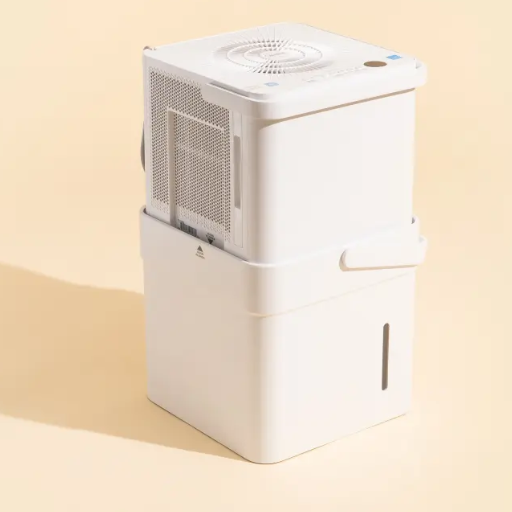
Dehumidifiers offer numerous benefits that contribute to healthier and more comfortable indoor environments. They help reduce excess humidity, which can prevent issues like mold growth, mildew, and dust mites—common triggers for allergies and respiratory problems. By creating a balanced humidity level, dehumidifiers protect furniture, electronics, and other possessions from moisture-related damage. Additionally, they improve air quality, making spaces feel fresher and more comfortable, while also enhancing the efficiency of heating and cooling systems.
Preventing Mildew and Mold Growth
Mildew and mold thrive in damp, humid environments, making effective moisture control crucial in curbing their growth. Studies indicate that indoor humidity levels above 60% greatly increase the risk of mold proliferation. By maintaining indoor humidity between 30% and 50%, you can create an environment that is less conducive to mold development. Dehumidifiers play a vital role in achieving this balance, as they work to extract excess moisture from the air efficiently.
Furthermore, regular cleaning and ventilation are essential measures in mold prevention. Ensure proper airflow in areas prone to high moisture, such as bathrooms, basements, and kitchens, by using exhaust fans or by opening windows when possible. It is also helpful to address water spills and leaks immediately, as even small amounts of standing water can cultivate mildew growth within 24-48 hours. Combined with vigilant monitoring of humidity and timely maintenance, these actions can significantly reduce the risk of harmful mold and mildew in your living or working space.
Improving Ventilation and Air Conditioning Efficiency
Enhancing ventilation and air conditioning efficiency in homes and workplaces not only ensures better air quality but also contributes to significant energy savings. Proper ventilation plays a crucial role in maintaining a healthy environment by regulating airflow, reducing indoor air pollutants, and managing moisture levels. Research shows that poor ventilation is linked to an increased risk of respiratory issues due to the accumulation of allergens, dust, and other harmful particles.
To optimize ventilation, consider upgrading to energy-efficient systems that include heat recovery ventilators (HRVs) or energy recovery ventilators (ERVs), which can recycle up to 80% of the expelled air’s heat or cooling energy while introducing fresh air. These systems help maintain comfortable indoor temperatures without overburdening an air conditioning unit.
When it comes to air conditioning, efficiency is often determined by the Seasonal Energy Efficiency Ratio (SEER). Modern units with SEER ratings of 16 or higher can use up to 30% less energy than older models, drastically reducing electricity bills. Smart thermostats are another excellent tool for boosting efficiency, as they allow precise temperature control and enable programmable cooling schedules to meet your specific needs.
Furthermore, sealing ducts and improving insulation around doors and windows prevents loss of conditioned air, ensuring the system doesn’t need to work harder to maintain temperature levels. Studies indicate that leaky ducts can account for upwards of 20% energy losses, underscoring the importance of regular maintenance and sealing.
Finally, adopting advanced technologies like variable refrigerant flow (VRF) systems or inverter-driven compressors can further enhance energy efficiency by adjusting performance levels based on real-time temperature demands. Using a combination of these strategies not only reduces energy consumption but also fosters a healthier, more comfortable living or working environment.
Enhancing Overall Comfort and Health in Humid Environments
Creating a comfortable and healthy atmosphere in humid environments requires a multi-faceted approach, grounded in proven techniques and modern advancements. High humidity levels can lead to issues such as mold growth, poor air quality, and discomfort, but strategic adjustments can mitigate these challenges effectively.
Dehumidification Systems
Installing a quality dehumidifier is a powerful step toward managing excess moisture indoors. According to recent studies, maintaining indoor humidity levels between 30% and 50% significantly reduces the growth of allergens such as mold and dust mites. Advanced models with smart sensors can automatically regulate humidity to keep it within the recommended range, ensuring a healthier environment with minimal manual intervention.
Enhanced Ventilation
Effective ventilation plays a key role in improving air circulation and reducing trapped moisture. Employing energy recovery ventilators (ERVs) or balanced ventilation systems can optimize airflow while minimizing energy waste. These systems help supply fresh air and expel stale, moist air in a controlled manner, which can be crucial in regions with consistently high humidity.
Air Conditioning Efficiency
Modern air conditioning units with built-in humidity control capabilities are now more accessible than ever. These systems not only cool the air but also remove excess moisture, enhancing comfort levels significantly. Data indicates that advanced air conditioning systems with humidity sensors can lower indoor moisture levels by up to 10% more efficiently than traditional models.
Natural Solutions and Houseplants
Incorporating specific houseplants, such as peace lilies and Boston ferns, can help absorb humidity and purify the air. While not a standalone solution, they offer a complementary way to lower certain indoor toxins and enhance the aesthetics of a space.
Regular Maintenance Practices
Routine cleaning and maintenance of HVAC systems, filters, and dehumidifiers ensure these systems remain effective. Blockages and dirty filters can impede performance, leading to a buildup of indoor pollutants and creating conditions for mold growth.
By combining these strategies, individuals can achieve a living or working environment that not only minimizes the discomfort of high humidity but also promotes better respiratory health, reduced allergies, and an overall more pleasant atmosphere.
Reference Sources
Frequently Asked Questions (FAQs)
Q: What are the different types of dehumidifiers available?
A: There are several types of dehumidifiers, including refrigerant (compressor-based) dehumidifiers, desiccant dehumidifiers, Peltier (thermo-electric) dehumidifiers, and commercial or industrial dehumidifiers. Each type is designed for different applications and varying levels of humidity control.
Q: How do refrigerant dehumidifiers work?
A: Refrigerant dehumidifiers use a compressor to cool a cold evaporator coil. As moist air is drawn into the dehumidifier, it condenses on the cold surface of the coil. The condensate is collected in a drip tray or pumped out, while the now dry air is warmed and circulated back into the room.
Q: What is a desiccant dehumidifier and how does it function?
A: Desiccant dehumidifiers use a desiccant material, such as silica gel, to absorb moisture from the air. The air is drawn into the dehumidifier, and the desiccant wheel rotates, removing moisture from the air. This type of dehumidification is effective in low temperatures and is quieter than compressor-based models.
Q: When should I use a Peltier dehumidifier?
A: Peltier dehumidifiers, also known as thermo-electric dehumidifiers, are best for small spaces with low humidity levels. They use a Peltier module to create a cold surface where moisture condenses, but they are less efficient compared to other types, especially in high humidity environments.
Q: How do I choose the right dehumidifier for my space?
A: To choose the right dehumidifier, consider the size of the space, the level of humidity, and specific needs such as noise level or energy efficiency. Dehumidifiers may also vary based on features like humidistat control, portability, and capacity to remove moisture from the air.
Q: What role do temperature and humidity play in dehumidification?
A: Temperature and humidity levels significantly impact dehumidifier performance. Dehumidifiers work best in warmer temperatures and higher humidity. However, desiccant dehumidifiers are effective in cooler environments, as they do not rely on a cold evaporator coil.
Q: Can dehumidifiers be used in HVAC systems?
A: Yes, dehumidifiers can be integrated into HVAC systems to enhance air quality and control humidity levels throughout a building. This is especially beneficial in commercial and industrial settings where large-scale dehumidification is required.
Q: How much moisture can a dehumidifier remove from the air?
A: The amount of moisture a dehumidifier can remove depends on its capacity, which is typically measured in pints per day. Larger units can remove more moisture, making them suitable for spaces with high humidity or damp air.
Q: What maintenance is required for dehumidifiers?
A: Regular maintenance of dehumidifiers includes cleaning or replacing filters, emptying the condensate tray, and ensuring the condenser coil is free of dust and debris. This ensures optimal performance and extends the lifespan of the unit.

